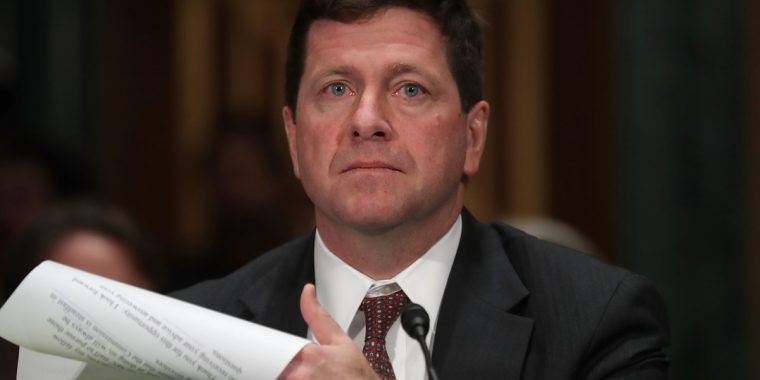Do you sometimes feel like you’re at the center of a technology tornado -– thing constantly changing around you? Or perhaps, for you, it’s more of a desert landscape you’re stuck in -– no sign of change in sight and no clear way out.
To get a sense of other lawyers’ relationship with technology at work, I crowdsourced the following question on LinkedIn: “Which one thing do you think needs to change most in your work environment?” This completely nonscientific poll lead to the following results:

Contracts Are At The Forefront Of Lawyers’ Minds, When We Aren’t Thinking About Cheesecake
Marny Abbott, a senior in-house lawyer, said, “The lawyer answer, of course, is ‘it depends.’ I don’t currently have a lot of contracts, and am a team of one so am flexible, but any of these could change on a dime. Most importantly, everything is better with cheesecake.”
Contracts are a massive opportunity to improve lives (for lawyers and clients alike) and have a real impact. Hayley Leviashvili, CEO and founder of gigLAW explained, “I believe automating contracts is essential in the legal industry and can increase efficiency immensely. Rather than having interns or associates go line-by-line, leaving out specific language, as you know opposing will ask for that and we consider it a ‘giveaway,’ automated contracts will eliminate much of the time that takes.”
Leviashvili explained, “Though that process is central to legal negotiations, I’ve always thought there are more efficient ways to go about drafting and negotiating contracts!”
Collaboration And Flexibility Are On Our Minds, Also, When We Aren’t Thinking About Cheesecake
Collaboration is critical and constantly evolving. Collaboration in the 1950s meant one thing; following the advent of e-mail, another; and with Slack, another. And of course — in times of COVID-19, something entirely different.
We must stay open-minded and ready to experiment. Lisa Lang, general counsel at Kentucky State University, observed, “Increasing internal collaboration is something I make a priority. With everyone socially distancing, it is important to make sure you are very intentional regarding your communication. Communication is key when you are working to create a collaborative environment.
Rachel Coll, a lawyer and certified life coach recalled, “Back when I worked full time for an employer, I couldn’t stand the traditional 9-5, be planted in your desk chair, expectation. Flexibility makes for happy employees who WANT to do the work, rather than employees who muddle through because they feel chained to their desks.”
This is something on everyone’s mind these days — which parts of the way things have always been done can we leave behind in a post-COVID world? How can we maintain flexibility and even increase efficiency?
Tech Creates Fear: Lawyers (Virtually?) Eat Their Feelings
Cheesecake, even when virtual, is a tempting choice. “It was a close call between flexibility and cheesecake. But my slowing metabolism does NOT need more cheesecake,” said Lisa Goldkuhl, a dedicated mother and in-house supervising attorney. Likewise, Annie Little, founder of JD Nation, admitted, “My brain is not yet fully caffeinated, so of course I went with cheesecake. I think that speaks to how difficult change can feel!”
Shari E. Belitz, CEO at Shari Belitz Communications, observed, “I think I collaborate pretty well with myself, I definitely give myself maximum flexibility. I’d love to know a bit more about automating contracts.” She added, “I did select cheesecake. But I know a lot about cheesecake. Automating contracts, not so much.”
Jamie Szal, Maine state and local tax attorney at Brann & Isaacson, said, “I like to think of myself as fairly tech-adept. Product of growing up the child of a Xerox engineer. But, as I affectionately forewarn my IT guy, I come with tech gremlins. Things just stop working the way they should when I come near.” She added, “That said, I love learning new tech to make my job better.”
There’s no shortage of technology needs in the legal world. Law is a slow-moving profession and lawyers tend to be risk-averse, so inefficiencies are carried much longer than they need to be. As a lawyer in the technology world, half of my mission is to get lawyers thinking about technology and identifying efficiencies. Then, once they do so, we can get to talking about fixes.
But until then — let us eat (cheese)cake.
 Olga V. Mack is the CEO of Parley Pro, a next-generation contract management company that has pioneered online negotiation technology. Olga embraces legal innovation and had dedicated her career to improving and shaping the future of law. She is convinced that the legal profession will emerge even stronger, more resilient, and more inclusive than before by embracing technology. Olga is also an award-winning general counsel, operations professional, startup advisor, public speaker, adjunct professor, and entrepreneur. She founded the Women Serve on Boards movement that advocates for women to participate on corporate boards of Fortune 500 companies. She authored Get on Board: Earning Your Ticket to a Corporate Board Seat and Fundamentals of Smart Contract Security. You can follow Olga on Twitter @olgavmack.
Olga V. Mack is the CEO of Parley Pro, a next-generation contract management company that has pioneered online negotiation technology. Olga embraces legal innovation and had dedicated her career to improving and shaping the future of law. She is convinced that the legal profession will emerge even stronger, more resilient, and more inclusive than before by embracing technology. Olga is also an award-winning general counsel, operations professional, startup advisor, public speaker, adjunct professor, and entrepreneur. She founded the Women Serve on Boards movement that advocates for women to participate on corporate boards of Fortune 500 companies. She authored Get on Board: Earning Your Ticket to a Corporate Board Seat and Fundamentals of Smart Contract Security. You can follow Olga on Twitter @olgavmack.




 Jordan Rothman is a partner of
Jordan Rothman is a partner of 





 Olga V. Mack is the CEO of
Olga V. Mack is the CEO of 



